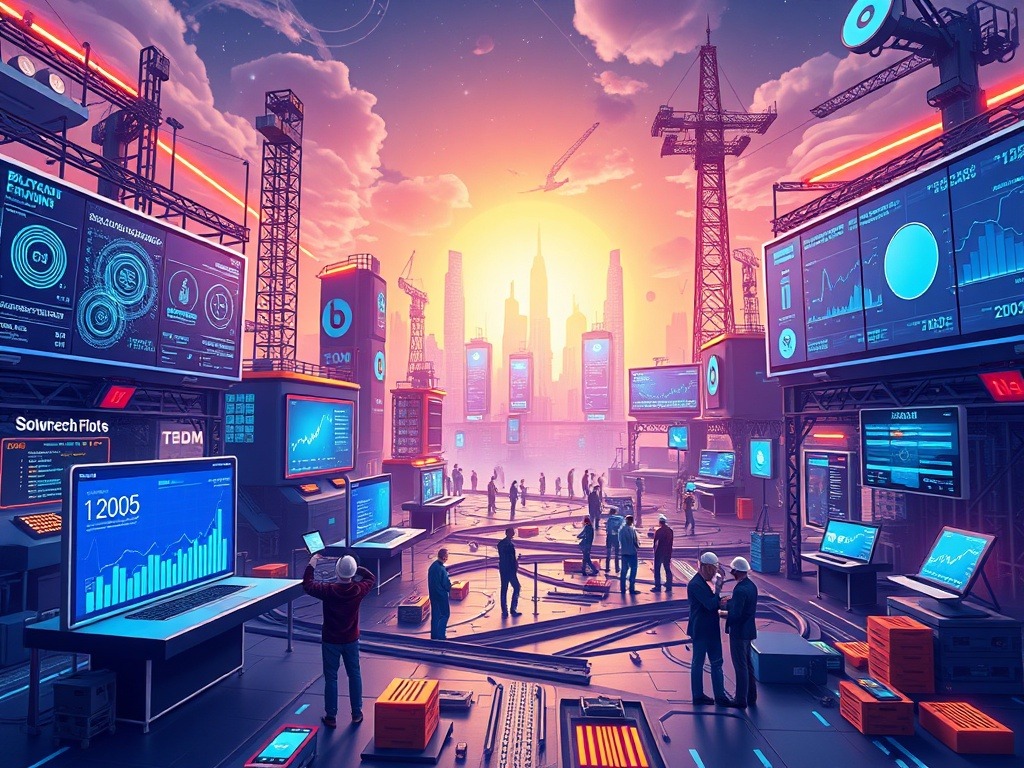The blockchain landscape in 2025 is more dynamic than ever. With an explosion of use cases across finance, gaming, identity, and supply chain, the need for scalable, developer-friendly platforms has never been greater. For those building the next wave of decentralized applications, choosing the best blockchain for developers is crucial. The ideal platform must balance flexibility, low fees, tooling, and long-term support.
Looking at the future of the internet, the primary chains are enhancing the Web3 ecosystem to both attract and retain builders. Some are distinguished by speed, some by interoperability, and others by their already proven reliability. The following piece is an overview of the platforms that are the benchmark of 2025 and the reasons that make each of them a favorable choice for the developers.
Ethereum: Established Ecosystem with Limitations
Ethereum is the most popular platform for smart contracts. The strong developer community, detailed documentation, and many programming tools available make it the best platform for the majority of the teams. Being a home for countless of the decentralized apps and a reliable supporting structure, Ethereum reigns as a continue to be a site of creativity.
On the other hand, Ethereum’s expensive gas fees and the problem of scalability are always a concern for all the developers on the platform. While the layer-2 solutions like Arbitrum, Optimism, and zkSync have helped relieve congestion, it is worth mentioning that the tools like the Ethereum mainnet are still very hard to manage and are often deemed as not-for-startups. The implementation of this platform is despite its high gas fees and scalability concerns, is still a go to for developers who are looking for an ecosystem that has already been tried and tested.
Solana: High Throughput and Real-Time Performance
With its focus on speed and performance, Solana is the underdog that has burst on the scene. It has such low block rates (under a second) with great throughput of transactions that Solana is the best candidate for gaming, DeFi, and NFT platforms which require real-time interaction.
Not just that, but one of the advantages of Solana is its constantly low fees, which are even less than the fees of the other blockchains during peak network activity. Some of the developers complained that Solana is a bit tricky to learn, because of the complex architecture and the new Rust programming language, but its construction has been more prominent. The platform that performs well and allows scaling without any extra work is Solana. It will be one of the best blockchains for developers in the year 2025.
Avalanche: Customization and Subnet Flexibility
Avalanche offers a unique proposition with its subnet architecture, allowing developers to launch custom blockchains tailored to specific use cases. This flexibility is a game-changer for enterprises and apps needing regulatory compliance, permissioning, or specialized features.
Avalanche supports multiple virtual machines, including an EVM-compatible chain, making it easy for Ethereum developers to migrate. Its ecosystem includes a growing number of dApps and development tools, and the platform’s fees are reasonable. This blend of performance, flexibility, and adaptability makes Avalanche one of the best blockchain for developers building niche or enterprise-grade solutions.
Polygon: Ethereum Compatibility with Lower Costs
Polygon has become a go-to solution for developers who want to tap into the Ethereum ecosystem without dealing with high fees. As a layer-2 scaling solution, it provides significantly reduced transaction costs while maintaining compatibility with Ethereum’s tools and smart contracts.
Polygon has also expanded into zkEVM solutions, giving developers more options for zero-knowledge scaling. Its active developer community and well-supported SDKs contribute to a smoother building experience. For those seeking familiarity and lower costs, Polygon continues to be one of the best blockchain for developers looking to scale efficiently.
Sei: Built for Speed and Trading Efficiency
A newer but rapidly growing platform designed with a focus on performance, particularly for trading and high-frequency applications is Sei. With its parallel execution engine and lightning-fast finality, off Sei minimizes latency and optimizes transaction throughput which are the most crucial for the financial applications and the real-time user experiences.
For builders in DeFi, gaming, and marketplaces, Sei offers tooling and APIs that streamline development. In 2025, it is recognized as one of the top blockchain platforms for developers because it prioritizes speed, user experience, and scalability without compromising decentralization.
Choosing the Right Platform
In 2025, the choice of the best blockchain for developers chiefly depends on the demands of your project. When it comes to the Ethereum network, there are no unmatched network impacts that the community can provide. If you are dealing with a speed issue, then Solana should be your first pick. If you want customization, go for Avalanche as it allows you to have subnets. Of course, Polygon could be another choice where you can get an easy pathway for Ethereum-native apps to scale, while Sei is still the champion in trading optimization and performance.
Different platforms bring a diverse variety of benefits. Developers must examine issues such as programming language understanding; ecosystem maturity, gas fees, scalability tasks, and community participations. The best blockchain for developers is the one that not only answers today technically but is also capable of supporting growth and adaptation of the Network.
Conclusion: Building on the Best
In the year 2025, the competition for top-tier developers is fiercer than it has ever been. No matter if your priorities are cost efficiency, ultra-fast performance, or ecosystem reach, there is a platform exclusively designed to fit your pre-set goals. With the best blockchain for developers on your side, you can ensure your project delivery is faster, the user experience is more straightforward, and the long-term sustainability is managed in a less complex way in the constantly changing Web3 ecosystem.


